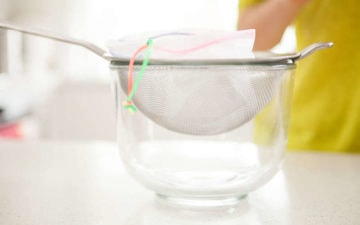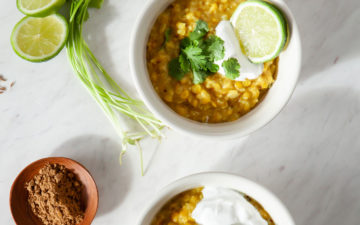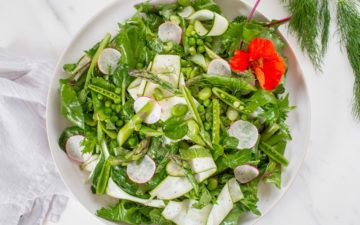
I have just recently completed my six month Shamanic Herbal Apprenticeship here in the beautiful West Coast Bush of Piha in New Zealand. We learnt how to connect with native trees, herbs and weeds, and then work with them to prepare a variety of healing remedies. We covered a bit of plant identification, wildcrafting, Materia Medica, herbal nutrition and cooking, plant essences, ointments, creams, tinctures, shampoos, eye drops and even learnt about the best herbs to use in smudgesticks. It was just divine.
The one thing we did, with every single day, was drink nourishing mineral rich herbal infusions. So today I am sharing a little about the importance of having minerals in the diet, and how to increase your intake simply by making these simple and tasty herbal preparations.
We regularly drunk infusions prepared with nettle, oatstraw, peppermint, hawthorn berries, red clover, licorice, damiana, comfrey and kawakawa (a New Zealand native). Herbs are able to gain access to all the wonderful minerals in the soil they grow in, then pass them on to us when we eat or drink them.
An infusion is simply a tea steeped for a lot longer, typically overnight. Water acts as a solvent and draws the minerals out of the plant and into the water. If your water turns a deep green colour after this process, then you know there are minerals in there! So drink them up!
I got into a nice habit of preparing a herbal infusion before bed, then straining the liquid out in the morning and using it as a base for my smoothie. My usual berry, greens and superfood spiked smoothies got taken to the next level with the addition of these herbs – nettle makes the water turn such a lush deep emerald green, and is a fantastic source of iron. Interestingly, a strong brew of oatstraw infusion has more calcium than milk. I keep a big pot of oatstraw on the stove and sip on it throughout the day.
Most health food or organic stores should stock dried nettle, oatstraw or red clover if you don’t have access to an unsprayed area to harvest them from. I live in the city so have to buy them dried like this. There is a great company called Austral Herbs that sell them bulk, organic, and I find this the cheapest way of purchasing. Of course, if you are lucky and have a wild garden, dig in!
Why we need minerals
“In the human body, minerals act as catalysts, participating in enzyme systems that allow the transformation of the food and air we breathe into energy, vibrant health, and consciousness.”
- Paul Bergner, The Healing Power of Minerals.
Minerals are important to wellbeing, and a deficiency in any of them can result in fatigue, mood swings, depression and a severely weakened immune system. A great analogy for their importance is that of the spark plugs in your car. Without them, it won’t be going in a hurry. This is just how they work in the human body.
Minerals are important as they;
- Provide structural support for the body (bones and connective tissue)
- Act as catalysts or co factors for enzyme reactions in the body
- Allow electrical impulses to be conducted along the nerves
We cannot make them in our bodies so we need to be careful to get them from our diets. Today, it is increasingly hard to obtain minerals from the diet, as modern agriculture has depleted the soil of her stores. Chemical fertilisers, pesticides, fungicides and lack of crop rotation are to blame. I could not believe this fact when I read it, apples, in the United States in 1914, contained nearly half the minimum recommended daily amount of iron. Today, we would be lucky to find one-fiftieth [1].
Where to get minerals from
Most minerals are found in rocks, soil, and the sea – which is simply a solution containing many of the minerals that make up the crust of the earth below. Not surprisingly then, sea vegetables (and seafood) are one of the best sources of minerals available to us, as they concentrate what is available in the sea.
Fun fact: the extracellular fluid in our bodies is of a very similar composition to that of sea water. The minerals from the earth’s crust are made available to us as they are eventually broken down into smaller particles by weather, geologically changes, or bacteria. From here, they become part of the soil that nourishes the plants, which then nourish us. Plants are a far richer source than animals are so eating sea vegetables and plants are our best bet at getting our quota.
To summarise, the best sources of minerals are;
- Wild plants grown in mineral rich soils
- Sea vegetables
Important minerals
There are two types of minerals needed for health, macro and micro (also known as trace) minerals. Both are vitally important – the macro minerals are named so simply because they are present, and are needed, in larger amounts in the body. The micro, or trace minerals, are needed in only very small amounts.
The macro (major) minerals include:
- Calcium
- Phosphorous
- Potassium
- Sulfur
- Sodium
- Chloride
- Magnesium
The micro/trace minerals are:
- Iron
- Zinc
- Copper
- Manganese
- Iodine
- Selenium
- Molybdenum
- Fluoride
- Chromium
- Boron
- Silicon
- Vanadium
- Lithium
- Germanium
- Rubidium
- Cobalt
Toxic minerals include:
- Aluminum
- Arsenic
- Cadmium
- Lead
- Mercury
Most minerals can be toxic if you have too much of them. The good thing about minerals is that they are inorganic elements. This means, unlike vitamins, they are not heat sensitive, so we can heat or cook our mineral rich foods and still retain these precious elements.
Mineral Rich Herbs
Nettle, oatstraw and red clover are relatively easy to get a hold of, and are very rich in minerals.
Nettle
Nettle makes a lovely, dark green infusion, it’s the one I have photographed above. It is a great healing support for the urinary tract and digestive tract. It is a great blood tonic. It is also beneficial for healthy hair – you can massage the infusion directly onto the scalp for hair loss. Nettle contains iron, calcium and magnesium, and many of the trace minerals. It nourishes the adrenals, balances the endocrine system and boosts immunity.
Oatstraw
Oatstraw is the green tips found on oats. It has a pleasant mild, slightly sweet taste, and is particular good for the nervous system. It has more calcium than milk, and is a great source of B vitamins – which are the co factors for enzyme activity in the body. The B vitamins help us manage stress and give us energy. Oatstraw gives us beautiful hair and nails, and boosts libido.
Red Clover
Red clover can be seen growing all over grassy verges up and down your street – you will definitely have noticed it. I wouldn’t pick or use these though as they would have been exposed to so many car fumes. Red clover has an affinity for us ladies, and is particularly helpful for balancing the endocrine system, it is useful in menopause and for hot flushes. It has anti tumor and anti cancer properties. Red Clover has the B vitamins, calcium, chromium, molybdenum, nickel, potassium and more.
How to Make a Mineral Rich Herbal Infusion
This could quite simply be the easiest recipe in the world.
Ingredients:
- Fresh or dried herb
- Boiling water
Equipment:
- 1 litre glass jar with a tight fitting lid
- Fine mesh bag to strain the plant material through
Method:
- Fill a one litre glass jar ¼ full of your chosen dried or fresh herb (nettle, oatstraw, red clover)
- Pour boiling water into the jar, and fill it right to the very top.
- Screw the lid on tightly.
- Leave it overnight to infuse.
- In the morning, pour the liquid out, and strain the plant material. Give the plant material back to the soil – it will still have some beneficial minerals in there.
How to take your Mineral Rich Herbal Infusion
Drink your infusion chilled or heat it again on the stove – you can even use it as a base for your smoothies like I do. Keep any left over in the fridge for a few days, any longer and it may start to ferment. One last note, oatstraw is a bit tougher than the soft nettle leaves and red clover flowers. Once you have made your infusion, you can re use it by boiling it up in some hot water and preparing a tea, this way you will squeeze out as much of those minerals as possible.
More herbie posts:
References:
- The Healing Power of Minerals, Paul Berger




Bridget Henning
How is the oxalate content of this infusion, especially of the oats and red clover?
Mika
I know this is an old post but I was wondering if you would recommend any of these for children. I want to know how to make sure a child gets all of their minerals which is a great concern that I have for my 4 year old. Thanks so much!
shirley
HI Lauren! Amazing! I love natural medicine and we just got back from NZ having visited Piha Beach on the Coromandel! I am wondering if you wouldn't mind sending me or referring me to find more information about the 6month Shamanic Apprenticeship you embarked on? I would much appreciate it 🙂 Kind regards shirley (brisbane)